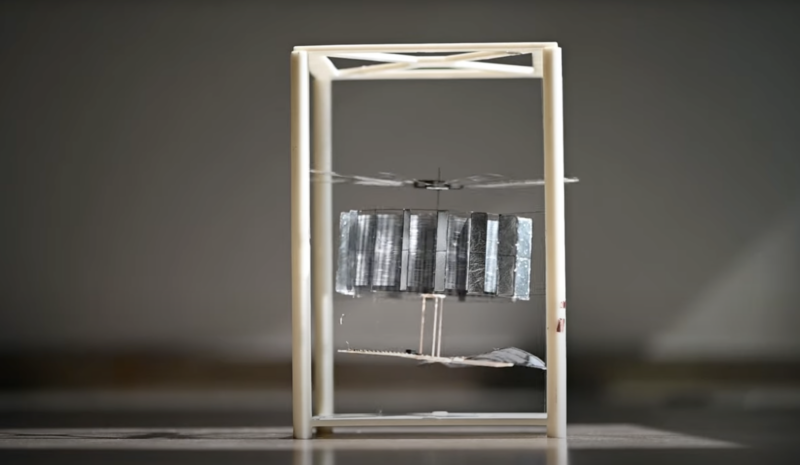
On Wednesday, researchers reported that they had developed a drone they're calling the CoulombFly, which is capable of self-powered hovering for as long as the Sun is shining. The drone, which is shaped like no aerial vehicle you've ever seen before, combines solar cells, a voltage converter, and an electrostatic motor to drive a helicopter-like propeller—with all components having been optimized for a balance of efficiency and light weight.
Before people get excited about buying one, the list of caveats is extensive. There's no onboard control hardware, and the drone isn't capable of directed flight anyway, meaning it would drift on the breeze if ever set loose outdoors. Lots of the components appear quite fragile, as well. However, the design can be miniaturized, and the researchers built a version that weighs only 9 milligrams.
Built around a motor
One key to this development was the researchers' recognition that most drones use electromagnetic motors, which involve lots of metal coils that add significant weight to any system. So, the team behind the work decided to focus on developing a lightweight electrostatic motor. These rely on charge attraction and repulsion to power the motor, as opposed to magnetic interactions.
Read 12 remaining paragraphs | Comments
Ars Technica - All contentContinue reading/original-link]




